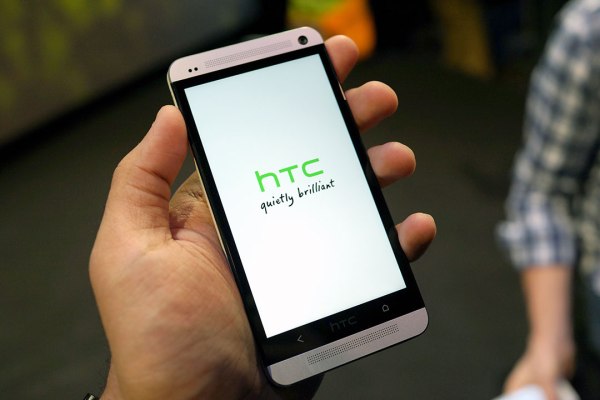So, after months of leaks and speculation, HTC has finally revealed the HTC One. To say it’s an important device for HTC is an understatement given the rough seas the company spent nearly all of last year navigating, but the people here seem confident that they’ve worked up a winner. Just after the event wrapped I managed to get some extended hands-on time with the One, and the thing left some strong first impressions (not all of them good).
I’ve already alluded to just how nice the One feels in my hand, but I feel that it’s worth repeating — HTC has done a bang-up job in terms of industrial design. It feels remarkably solid without being unwieldy thanks to its tapered unibody aluminum frame and its relatively modest 4.7-inch display. What’s more, the near-total absence of gaps in the body helps solidify the One’s position as a premium smartphone. Giving HTC points for design prowess is nothing new though. The company has proven time and again that it knows how to make handsome hardware. Anything less at this point would be a step backward, and one that HTC can ill afford.
Sadly, for a device that puts a lot of emphasis on the camera, there’s no physical shutter button. A minor omission sure, and one that HTC has justified by saying that it had done away with excess design flourishes, but one I strongly disagree with. Speaking of omissions, the One only sports two softkeys — a home button and a back button. HTC’s Jeff Gordon told TechCrunch that people just didn’t use the other recent apps button very often (for the record, you can now bring up a grid of running apps by double-tapping the home key).
The 4.7-inch 1080p Super LCD3 panel was impressive in terms of clarity and color reproduction, and as you’d expect it’s damned near impossible to pick out any individual pixels. Brightness seemed more than adequate in this dark warehouse on the west side, but the Droid DNA’s display couldn’t crank up as high as those seen on other devices — I’m waiting to spend some time with the One in daylight before I pass judgment.
[gallery columns="3" ids="760854,760855,760856,760857,760858,760859,760860,760866,760848,760865"]
As far as the camera goes, it’s difficult to discern just how good the images captured by HTC’s Ultrapixel sensor without dumping them onto a computer for further inspection, but early results seemed promising. The lighting around here (as you could probably tell by some of the stills I took) is downright atrocious, but the One was able to capture some pretty sharp images without much grain getting in the way. I’m looking forward to getting my hands on a review unit and really putting this camera through its paces.
Perhaps one of the weirdest things seen on the One is the camera’s Zoe feature — the idea is that users will take three-second video clips and share them with friends and family. Sound familiar? HTC’s Gordon told TechCrunch that Zoe was in development long before Twitter’s Vine hit the scene, but it’s hard not to draw parallels between the two. Switching into Zoe mode took a single tap, and recording was a snap (neat touch:it actually starts recording 0.6 seconds before you press the button) but I’m just not sure why HTC needed this to exist. Couple that with the fact that HTC will only store Zoes online for 180 days and you’ve got all the makings for a non-starter of a feature.
And then there’s the software. Sense 5 is a drastic departure from HTC’s older UIs, and in some ways it’s awfully spartan in comparison. There’s lots of space to be found here (the app launcher only had three columns on these demo units), and the components under the hood help ensure that swiping through apps, scrolling down webpages, and bouncing in and out of BlinkFeed is seamless.
Ah, BlinkFeed — its inclusion is one of those curious decisions that seems like it could go either way. HTC’s rationale was that people use their smartphones primarily to devour content, and BlinkFeed was designed to keep as few hurdles between the two as possible. After swiping though the activity stream, I could see the value in having this customizable firehose (especially after taking the time to customize those content sources), but I wonder how many people walking through a big-box store mulling over another two-year contract will see what I did. Hiding the more standard Android homescreens is a gutsy move, but we’ll soon see how it all plays out.
What remains to be seen is simply whether or not the One can effectively put up a fight against devices like the iPhone 5 and Samsung’s fast-approaching Galaxy S IV. Goodness knows that HTC could really use a big win, and the HTC One certainly pushes plenty of the right buttons. It’s too early to say if it manages to push enough of those buttons, but from what I’ve seen, One seems like a device that’s poised to make a real splash come March.
